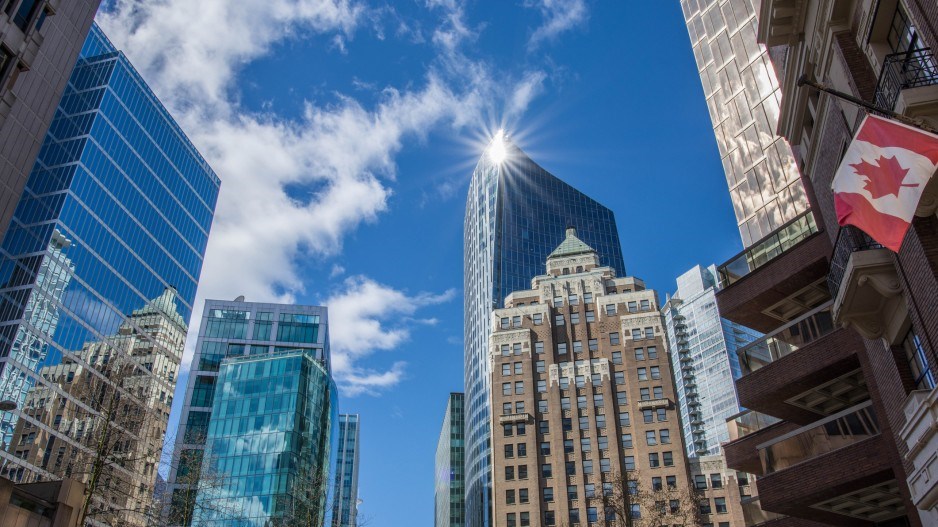In February, the City of Vancouver became the first Canadian city to regulate greenhouse gas emissions produced by large buildings when it began implementing its Annual Greenhouse Gas and Energy Limits bylaw.
As our companies have collectively decarbonized about 20 large buildings throughout this region, we wanted to share our perspective.
While the commercial real estate sector has demonstrated strong leadership on energy efficiency, from our first-hand experiences, we appreciate that large-building retrofits can be complex and often challenging to pencil out. While regulation is, of course, not always popular, when it comes to tackling structural barriers to decarbonization, we view it as an effective market transformation tool. And the City of Vancouver has taken a thoughtful approach that we feel deserves recognition.
Here’s what the city is now requiring and what it seeks to accomplish.
Today, buildings that burn natural gas in space and water heating equipment – including the large boilers in downtown’s office towers – collectively produce close to 60 per cent of Vancouver’s overall carbon pollution.
For well over a decade, both BC Hydro and FortisBC have funded incentive and financing programs to encourage portfolio managers to adopt cleaner and more energy efficient HVAC technologies and upgrade windows and insulation. These have yielded some outstanding examples of near-zero emissions retrofit success stories. And more support is on the way. For example, the Canada Infrastructure Bank’s building retrofit initiative aims to connect owners of large commercial buildings with low-interest capital.
But while the number of standout projects continues to grow, they remain the exceptions to the rule.
That’s because, even with these programs, it can be difficult for commercial property owners and managers to justify the long payback period of a complex retrofit without a corresponding enabling regulatory framework sending a signal to the market that this work needs to be done within the coming 15 years.
In the absence of such a framework, the buildings sector’s emissions have remained stubbornly unchanged for decades – not just here in Vancouver, but across the country. A few years ago, the City of Vancouver concluded that new regulation would be needed to address this. Staff members reached out to the sector, listened to its concerns, and did their best to accommodate the feedback with achievable targets.
Now, as a first step, the city is requiring owners and managers of the largest commercial properties to report their energy use and greenhouse gas intensity. The deadline for the first round of annual reporting is June 1, 2024. Then, starting in 2026, these largest office and retail buildings will be subject to a carbon intensity limit.
Some will already be in the clear, but others will need to switch to renewable energy, improve efficiency and invest in better technology to future-proof their buildings for our changing climate by adding cooling and efficient heating systems.
In the coming years the city will gradually expand the requirements and introduce additional actions to eventually regulate thousands of properties. And just as it is doing now, it will offer flexible compliance options and the ability to leverage already-planned equipment replacements. This will improve energy efficiency and reduce operational costs – driving down and eventually all-but eliminating greenhouse gas emissions from Vancouver’s larger buildings.
Though Vancouver is the first city in Canada to regulate carbon from existing large buildings, Toronto and Montreal are hot on its heels.
Like all major cities, Vancouver is competing to attract investment and new businesses, and the jobs that come with them. On this front, we believe the city’s existing buildings regulation will help give it an edge. As the global economy steadily decarbonizes, and as companies look to open new offices, commercial spaces that align with their own climate and energy ESG objectives will prove attractive.
Leading commercial real estate and investment company JLL projects that by 2030, demand for low-carbon office space across the United States is set to outstrip supply by 75 per cent. The company found the same thing when it looked at Paris, Sydney and other leading global urban centres.
By transitioning to higher-performance and ultimately zero-emissions buildings, the commercial real estate sector will significantly reduce its contributions to climate change while offering higher value to its tenants. We look forward to continuing to support the sector through this transition, enabled by thoughtful regulation like that now in place in Vancouver.
Scott Sinclair is the CEO of SES Consulting. Mike Kasuya is a principal at AME Group and leads its building energy services team.







